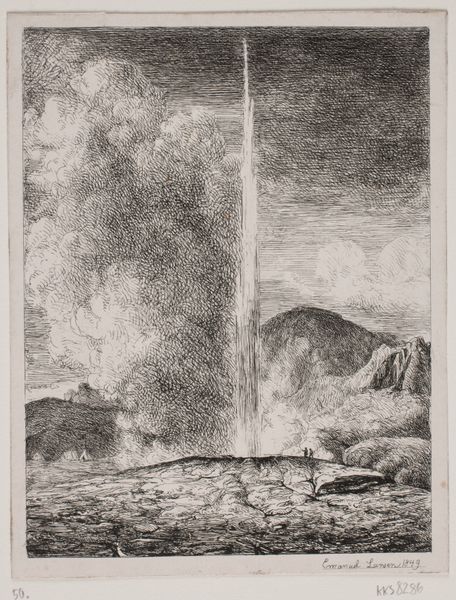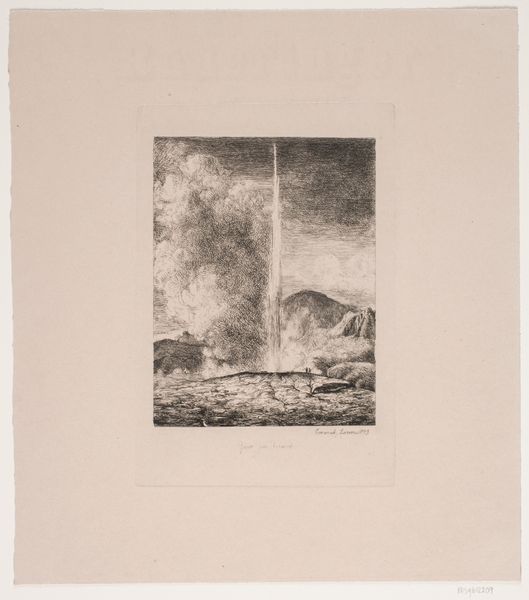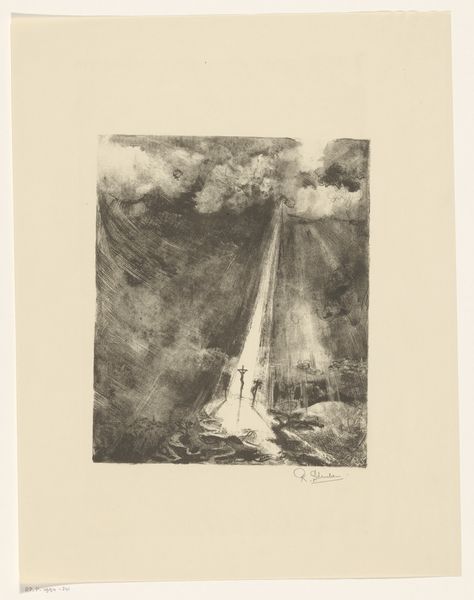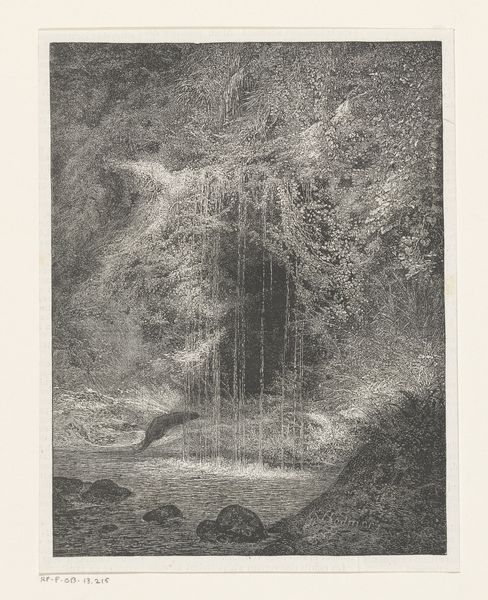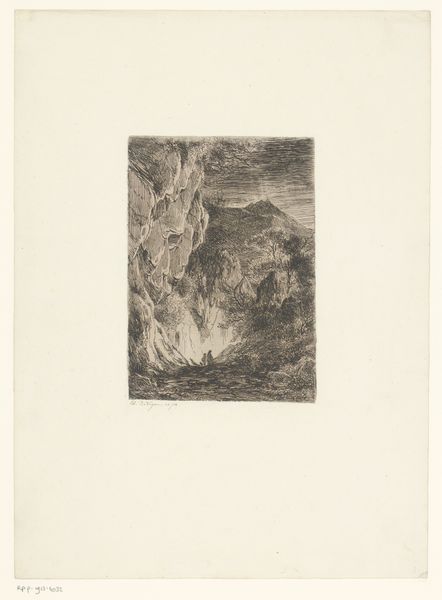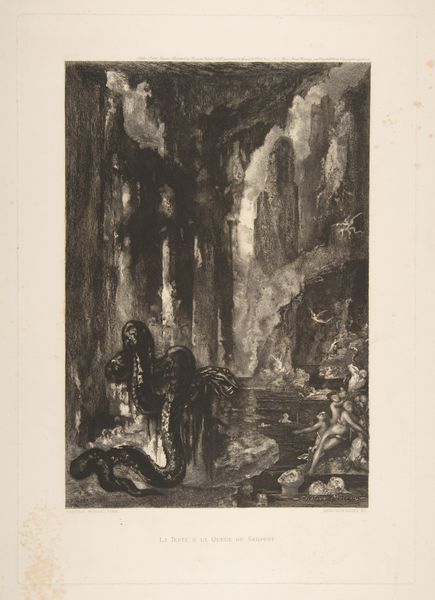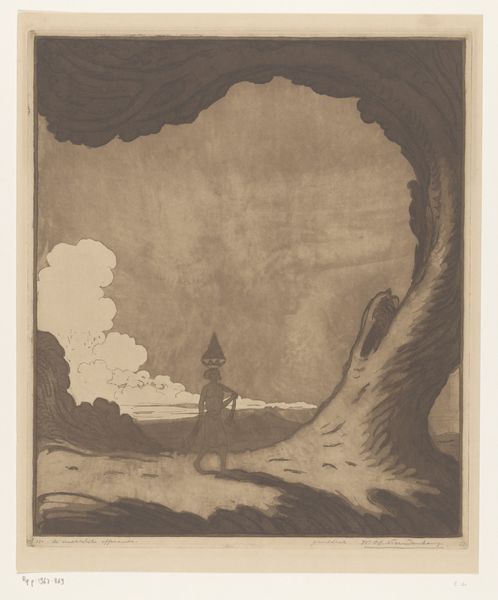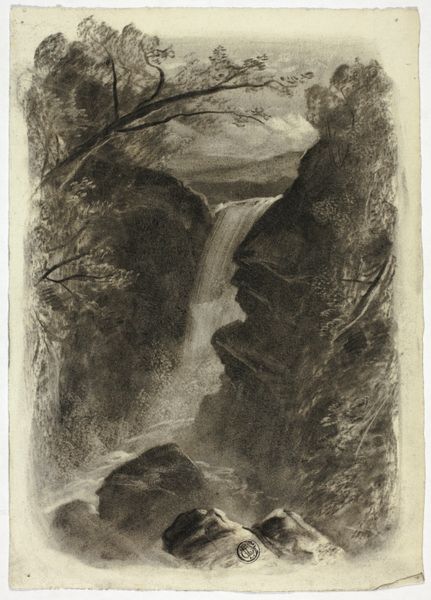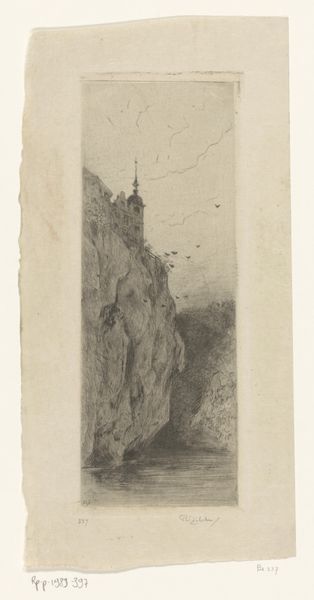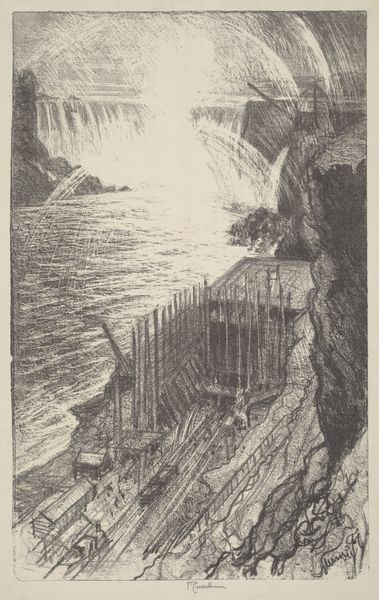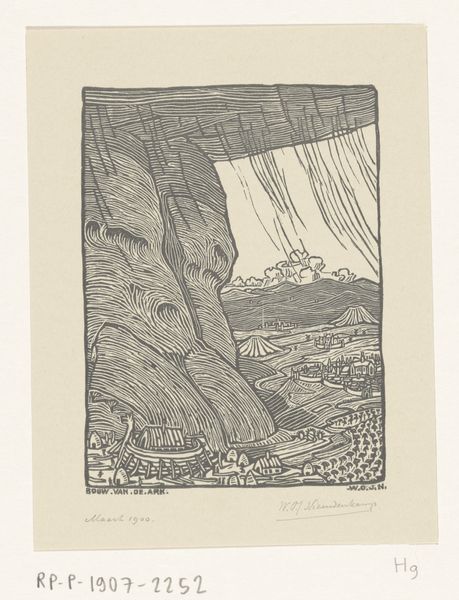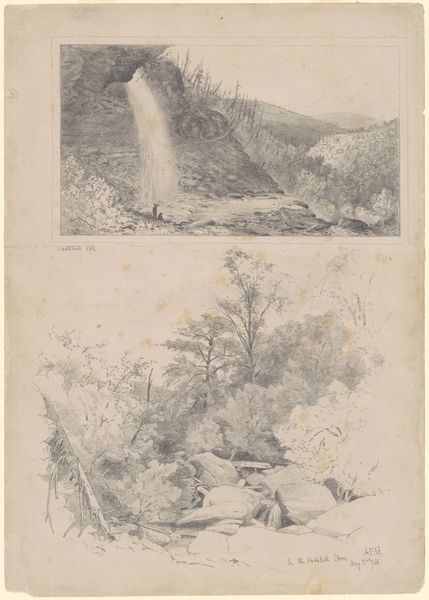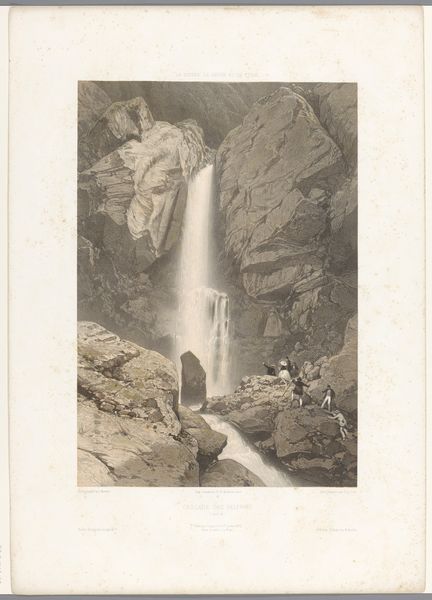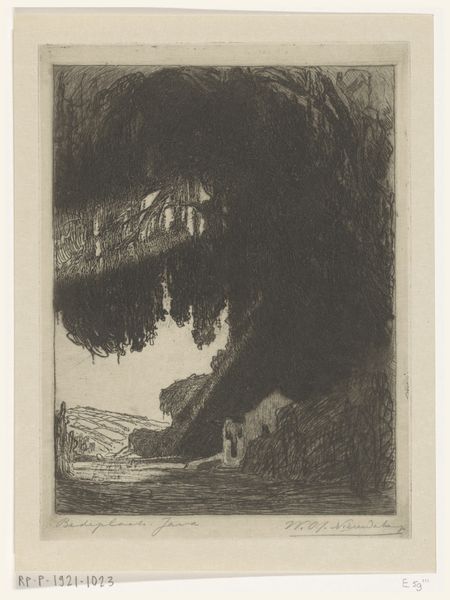
print, etching, engraving
# print
#
etching
#
landscape
#
romanticism
#
engraving
Dimensions: 175 mm (height) x 119 mm (width) (plademaal)
Emanuel Larsen created this print of an Icelandic geyser using etching in 1849. Etching involves covering a metal plate with a waxy, acid-resistant ground. The artist then scratches an image into the ground with a needle, exposing the metal. The plate is then immersed in acid, which bites into the exposed lines, creating grooves. The character of those lines has everything to do with the image we see. Look closely: the stark verticality of the geyser is achieved by dense parallel strokes, lending it a monumental quality. Note how Larsen contrasted that regularity with the more chaotic hatching used for the sky and landscape. This contrast speaks to a wider tension, between the sublime power of nature, and the tools humans use to represent it. Etching, while indirect, still demands careful skill, labor, and a sensitivity to the materials. It’s this interplay that gives the print its enduring fascination, reminding us that even the most awe-inspiring sights are always mediated by human hands and ingenuity.
Comments
No comments
Be the first to comment and join the conversation on the ultimate creative platform.
